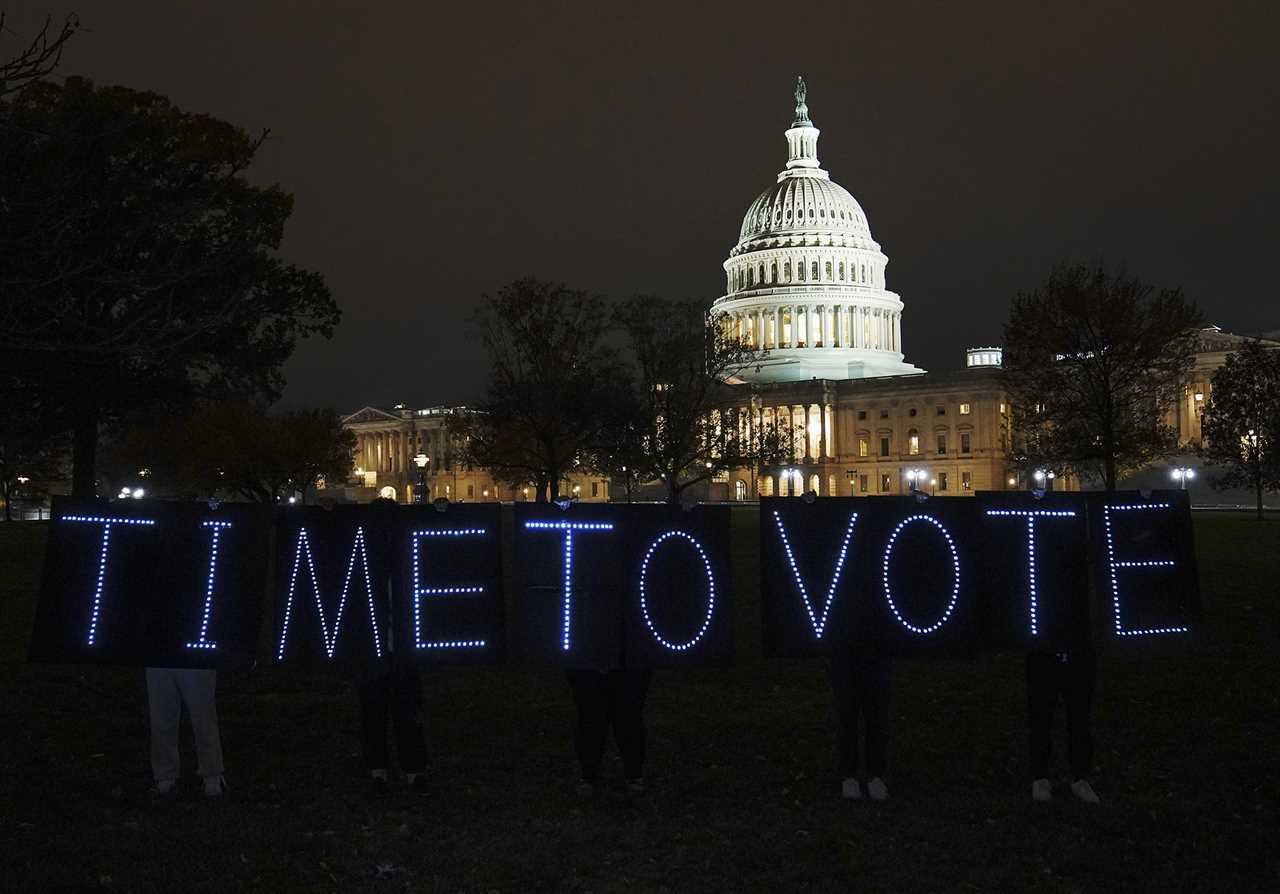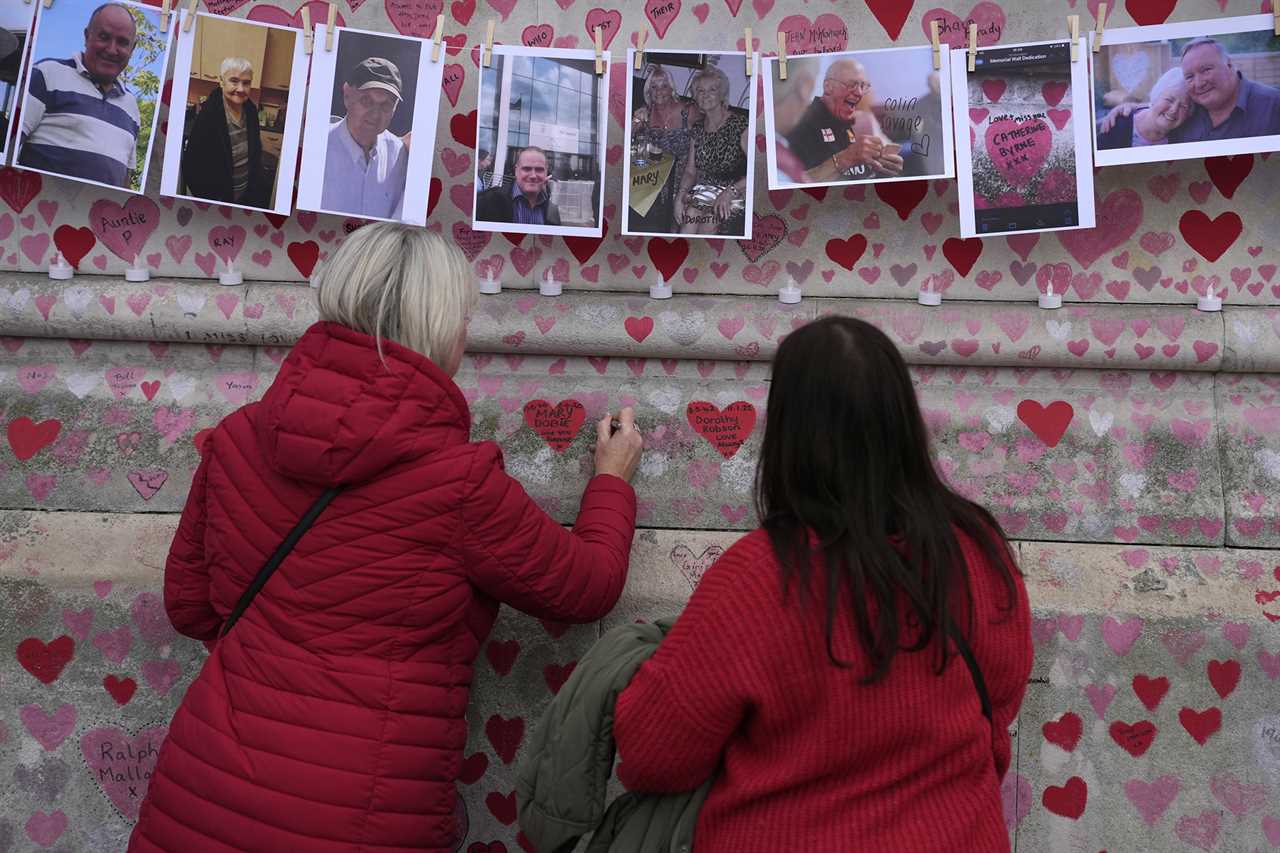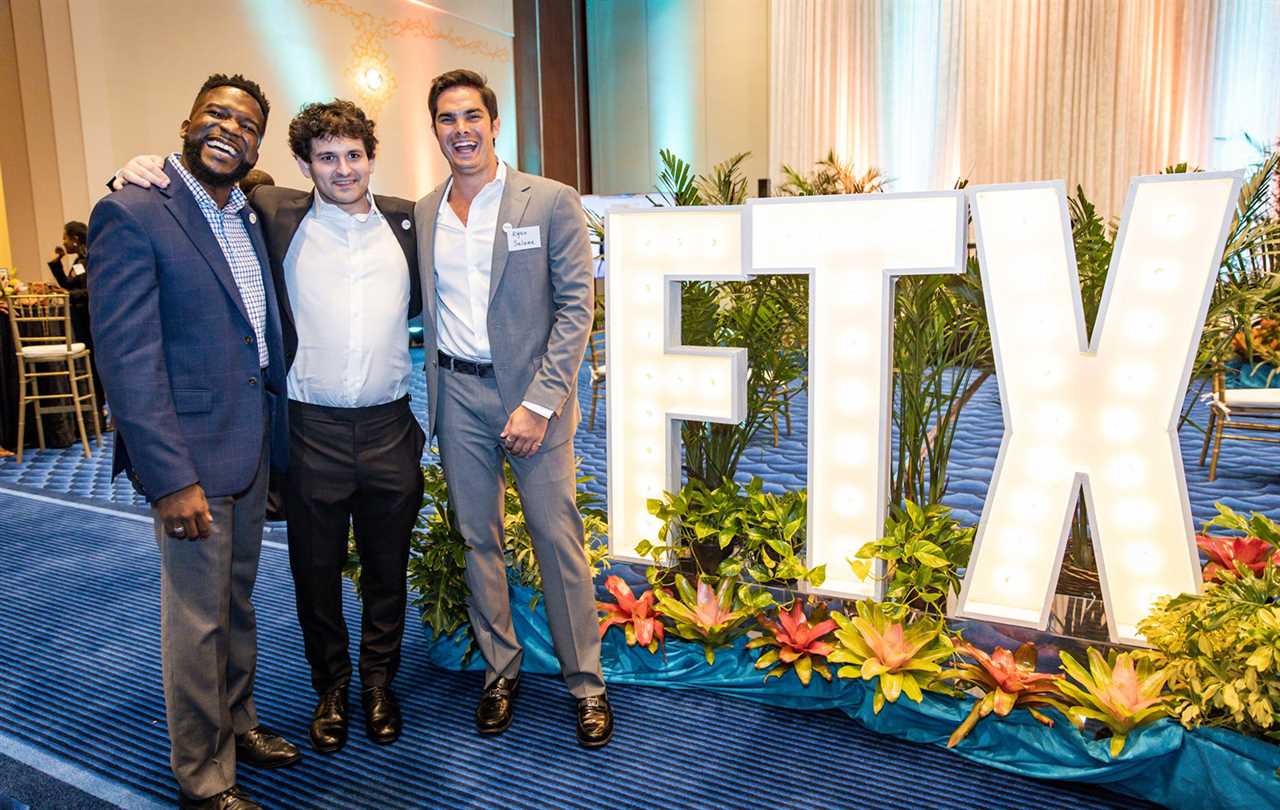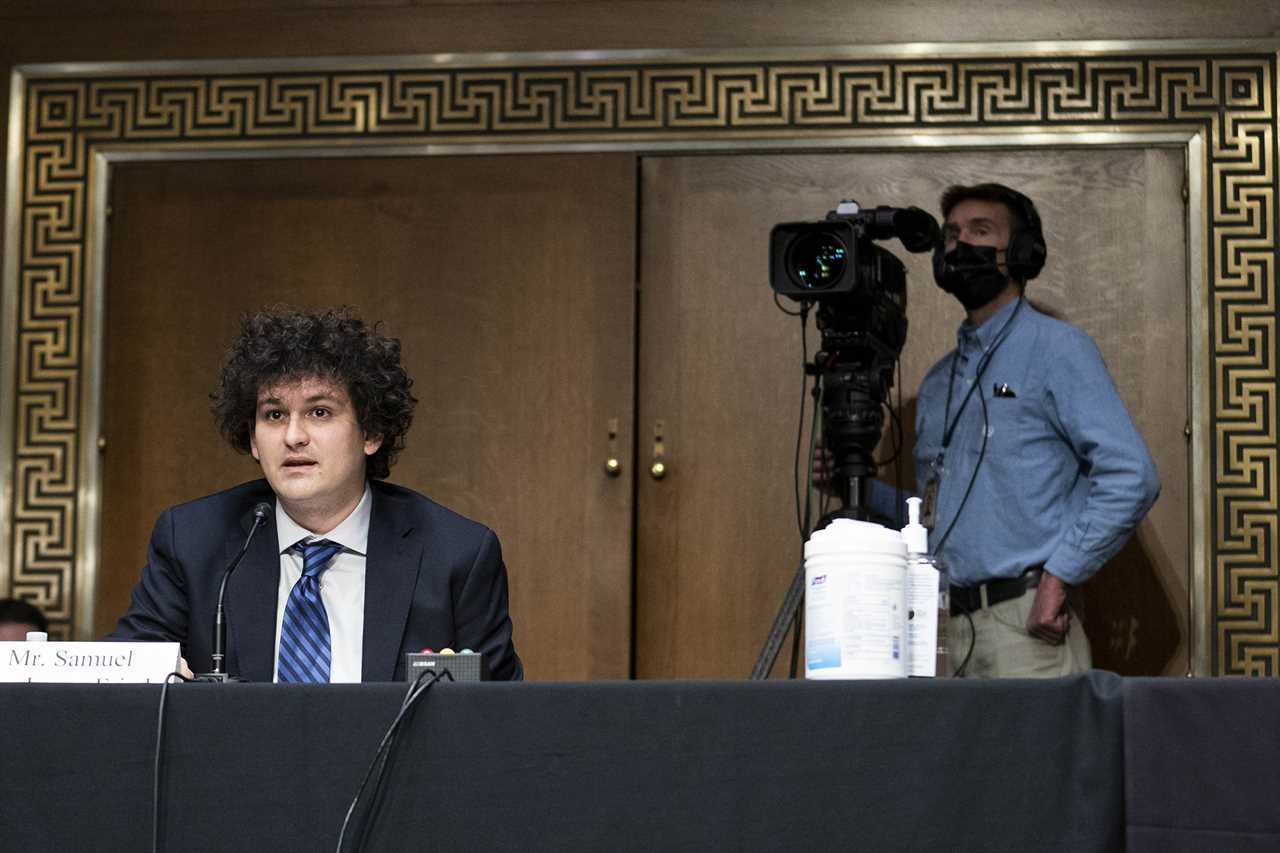
NASSAU, Bahamas — One of the biggest donors in Democratic politics this year isn’t sure if he really wants to be a Democratic megadonor — at least not on the party’s terms.
But then, part of life as Sam Bankman-Fried is about embracing paradoxes. The 30-year-old, who has amassed an estimated $20 billion fortune over the last four years through cryptocurrency, drives a hybrid Toyota Corolla. A monk-like aesthetic extends from his clothes — he showed up to chat in a wrinkled T-shirt and beat-up New Balance sneakers — to his personal life. He shares a penthouse with about 10 roommates and cooks for himself. He still uses his parents’ Netflix account. When he lobbies in Washington, D.C., he’ll often crash on his brother’s couch.
He was also one of just a handful of donors who spent $10 million-plus backing President Joe Biden in 2020, and in the last year, he’s hired a network of political operatives and spent tens of millions more shaping Democratic House primaries. It was a shocking wave of spending that looked like it could remake the Democratic Party bench in Washington, candidate by candidate. Looking ahead to the 2024 election, he has said he could spend anywhere from $100 million to $1 billion.
The head-spinning speed of Bankman-Fried’s entrance onto the national political scene kicked off a race in Washington to understand him and define him — as a potential Democratic savior, a head-scratching mystery or, occasionally, a corrupt crypto bogeyman. Candidates, consultants and members of Congress are all eager to direct the millions he’s spending. And Bankman-Fried seemingly wandered into the middle of the Democratic Party and pulled out his wallet at the exact moment when many Democratic megadonors are pulling back, all ahead of a blistering midterm environment.
Some Democrats see Bankman-Fried’s investments and engagement as the thing that could help them hold back a red midterm wave.
“We’ve never seen something like this on this scale,” said Bradley Beychok, co-founder of American Bridge 21st Century, a Democratic super PAC. “On our side, there’s a small pool of people who write these kinds of checks and they tend to be the same folks. But Sam, to his credit, came right in with a big splash.”
In 2022, Beychok continued, “he could make a big difference for Democratic candidates — if he wants.”
But it’s not clear if that’s what Bankman-Fried wants. Even though he spent about $40 million on campaigns this year, according to publicly disclosed filings with the Federal Election Commission, he told POLITICO that he plans to only spend about half that amount during the general election, when the Democratic Party faces losing its congressional majorities. He's more motivated by promoting new candidates in safe seats than the battleground combat that decides partisan control in Washington. While his biggest spending has been on Democratic primaries, he has also contributed directly to Democratic and Republican campaigns alike.
And though Bankman-Fried has what it takes to be the biggest donor in politics — an eleven-figure bank account he’s committed to giving away before he dies, as well as some very specific ideas about what needs fixing and how — he is only now explaining the unconventional path he plans to cut through the world of Washington. It often comes with an enormous caveat: “It depends.”

He’s guided by an arcane social philosophy that’s obsessed with doing the most good for humanity by tackling intractable and neglected problems, which led him to investing in certain types of endangered-species candidates: people who commit to making pandemic preparedness funding a top issue, and people willing to work across the aisle to achieve it. And Bankman-Fried is taking great pains to shed traditional labels as quickly as Democratic operatives are trying to pin them on him.
“There have been a lot of times when I have been a bigger supporter of Democratic candidates than Republican candidates. That's not — that's not an immovable fact about the world,” Bankman-Fried said in an interview at the bland, inland office park where FTX, the cryptocurrency exchange platform he founded in 2019, has its cramped headquarters. “I am legitimately worried about doing things that will make people view me as partisan when it's not how I feel … because I think it both misses what I'm trying to do and makes it harder for me to act constructively. And I think I probably started a little bit too late in taking a more proactive role in discussing how I view this.”
“My loyalty isn’t to a word, and it’s not to a party,” he added.
The bipartisan pitch has set a few eyes rolling. “Can he suddenly spur bipartisanship by spending a couple million in a few races? No,” said one Democratic donor adviser, granted anonymity to discuss the issue candidly. “He thinks he can reshape Washington and he can’t.”
The evidence that Bankman-Fried truly wants to be a bipartisan donor is thin — at least in his publicly disclosed spending. Although Bankman-Fried donated directly to a half-dozen Republicans and gave $105,000 to a super PAC that backed Katie Britt, the Republican Senate nominee who won a contested primary in Alabama, it still pales in comparison to the many tens of millions he’s disclosed giving to Democratic candidates and groups, including the Democratic National Committee and major Democratic super PACs.
His critics insist, too, that for all his focus on pandemics, he’s really just getting everyone’s hands dirty in preparation for when crypto comes up for regulation before Congress.
Whatever he’s doing, what Bankman-Fried wants now matters to Washington. And Washington is racing to figure him out.
“Sam cares about ideas. He cares about ideas that make the world a better place. Now, that sounds trite, but without naming names, I think a lot of large donors don’t. They care about supporting their tribe, whatever it is,” said Gabe Bankman-Fried, Sam’s younger brother.
“The skepticism a lot of people feel is the lack of understanding of what truly gets Sam excited and out of bed in the morning,” Gabe continued. “And it’s not his team.”

What gets Gabe out of bed — a twin inside a closet-turned-bedroom in a house he also shares with several roommates — is preventing the next pandemic.
Gabe, 27, and Sam, 30, are deeply influenced by “effective altruism,” a philosophical and social movement that’s defined by maximizing good through a data-driven framework — an unusual lens for engaging with politics. Philanthropically, it means testing and measuring efforts through a cost-per-life-saved formula. For example, an experiment showed investing in treating children for intestinal worms did more to improve their educational outcomes than providing schools with extra resources for textbooks.
In politics, that’s led Sam Bankman-Fried to dual objectives. There’s the one he has talked about most: preventing the next pandemic, which he fears could be more lethal than Covid-19 and would pose a huge threat to humanity, an obsession for effective altruists. His other goal is solving the gridlock in Washington by turning down the partisan temperature and supporting candidates who “are just going to take a constructive approach in D.C.,” he said.
“There’s huge amounts of good that can be done by a government that works constructively … versus a zero-sum vision of government,” Bankman-Fried said. And the tone and tenor of government, he continued, has “a massive, massive impact on what life is like in the United States” and the rest of the world.
Effective altruism — whose followers connect through a sprawling network of internet forums, blogs and conferences — was founded in the late 2000s by academics at Oxford University, building off the work of philosophers, like Derek Parfit, who argued that the 21st century would be “the most dangerous and decisive period” of existence for humankind, and Princeton University’s Peter Singer, who pushed for more effective philanthropy.
Bankman-Fried was first drawn into this world through animal welfare. “Quantitatively, you enjoy eating a nice meal for 30 minutes and there’s five weeks of torture that went into producing that,” he said. He went vegan his freshman year at Massachusetts Institute of Technology. He then came to the “earning-to-give” model of philanthropy — working to earn a ton of money in order to give it all away. The money-earning part happened quickly: After college, he worked on Wall Street for several years before founding Alameda Research, a cryptocurrency trading firm, in 2017, and earning millions off of crypto arbitrage.
Another aspect of this movement the Bankman-Frieds believe in is “longtermism” — that humanity has a moral obligation to future generations as well as to those alive now. That makes a global threat, like a pandemic even more lethal than Covid, a five-alarm-fire problem that’s not being broadly addressed by Washington.
“Covid has killed 100 times as many people as [those who died on] 9/11 and we spent a trillion dollars on foreign interventions, created the Department of Homeland Security and radically transformed our foreign policy — and we did nothing after Covid,” Gabe said. “If we really wanted to protect against another pandemic, then … we need the kind of bipartisan cooperation and support for this, for biosecurity in a post-Covid world, that we have for national security and a post-9/11 world.”
Gabe started advocating on behalf of pandemic funding in the Democratic Party’s massive social spending legislation last summer, but he watched in dismay as the number shrank as the package got whittled down. When he’d meet with members of Congress or senior staffers on behalf of his newly founded nonprofit — Guarding Against Pandemics, led by Gabe and seeded by his brother’s cash — Gabe kept hearing that even though they agreed preventing the next pandemic was important, it wasn’t their number one issue.
“No one in the room was sticking up for it,” he said. “It was clear that to build this movement, we needed to start earlier, look upstream.”
Heading upstream meant changing tactics from convincing current lawmakers to electing new ones — endorsing and supporting candidates for open House seats who prioritized pandemic funding and showed a willingness to work in a bipartisan way to get it done. By spring, two super PACs sprang up: Protect Our Future, funded by Sam Bankman-Fried, which focuses exclusively on Democratic House primaries; and American Dream Federal Action, which spends on Republican Senate and House primaries and is funded by his FTX partner, Ryan Salame.

Along with the rapid organizational growth came a growing political staff around the Bankman-Frieds. They work closely with Michael Sadowsky, who serves as the president of Protect Our Future and previously worked with Gabe at Civis Analytics, a Democratic data firm. Dave Huynh, who worked on Kamala Harris’ presidential primary bid, and Sean McElwee, who leads Data For Progress, a Democratic polling firm, are both advising on political projects. This spring, Sam also hired Jenna Narayanan, a longtime adviser to California megadonor Tom Steyer, to work with him on his political giving.
Narayanan’s hiring, in particular, says something about Bankman-Frieds’ ambition to be something more than an ATM for a party. He specifically compared his vision for a political operation more to what Steyer built — starting the climate-focused NextGen, “a policy-based platform” — than the way, say, the late Republican megadonor Sheldon Adelson focused more on distributing money to “purely partisan” political organizations, Bankman-Fried said.
They’ve also gotten office space — a sparse townhouse steps from the U.S. Senate where Gabe runs Guarding Against Pandemics, a physical sign of the group’s long-term ambition to be a presence in Washington. And last month, FTX launched its own corporate PAC, another group in the constellation of political outfits now surrounding Bankman-Fried.
Guarding Against Pandemic has endorsed 22 Democrats and 15 Republicans, a mix of incumbents and first-time candidates. Protect Our Future and American Dream Federal Action have intervened in a subset of those races: Since January, Protect Our Future spent nearly $22 million on TV ads in 17 primaries, while American Dream Federal Action dropped $10 million on TV ads in 15 races, according to the ad-tracking firm AdImpact.
Nearly all of the primaries where Guarding Against Pandemics has endorsed — and where those super PACs spent — are in safe blue and safe red seats. That’s an explicit strategy on behalf of the Bankman-Frieds, who see primaries as a more cost-effective route to building support for pandemic funding — the same way groups like EMILY’s List on the left and the Club for Growth on the right have seen open primaries as an economical way to build power in Washington.
Playing in both parties’ primaries also keeps the effort bipartisan, which Gabe Bankman-Fried described as “very deliberate.”
“We've seen people try to only build power within one party and fail at achieving their goals because, frequently, we have a divided government,” Gabe said. Former Rep. Max Rose (D-N.Y.), another Guarding Against Pandemics-endorsed candidate running for his old seat this year, echoed the thought: “I can guarantee that over the course of the next half century, Democrats will have the keys to the castle and Republicans will have the keys to the castle, so when it comes to an existential threat, it has to be bipartisan.”
Through it all, Gabe Bankman-Fried said, “I want to be really clear with D.C., the machine writ large, that we are an issue-based organization.”
“We're playing a long-run game here, where even if the champions we elect lose power in two years, they’ll gain power again at some point,” Sadowsky added.

The two-page questionnaire for candidates interested in a Guarding Against Pandemics endorsement includes six yes-or-no questions, according to a copy obtained by POLITICO. They focus exclusively on pandemic funding — like whether the candidate would commit to investing $65.3 billion in it over the next decade.
Jasmine Crockett, a Democratic state legislator who ran in a crowded Texas primary for a deep-blue, Dallas-based seat, said her 15-minute interview with the group focused “on pandemic preparedness, period.” Protect Our Future then spent $1.4 million supporting her.
It was only through press reports, Crockett said, that she found out Sam Bankman-Fried “had anything to do with Guarding Against Pandemics or with crypto, for that matter.”
Several other campaigns who received an endorsement from Protect Our Future also echoed Crockett’s readout, but that hasn’t stopped a swirl of suspicion that’s followed Bankman-Fried’s spending: that it’s a handy shield to obscure an interest in shaping crypto regulation to the benefit of him and his industry.
“He’s trying to create friendly relationships so when the time comes, when people in Congress, from Democrats to Republicans, look to regulate crypto, they don’t want to pick that fight with him,” said Faiz Shakir, Bernie Sanders’ 2020 campaign manager.
“It’s almost like they set up an algorithm, fed in three provisions: One, I want a high win percentage, over 90 percent; two, I don’t want to go negative, and I want to maintain a positive presentation as a serious-minded person; and three, I want to engage politics, but I don’t want it to seem like it’s about crypto,” Shakir said. “Some genius comes up with pandemic preparedness, spends millions and that’s what this looks like.”
One race in particular, Oregon’s 6th District, gave serious lift to those criticisms, after Protect Our Future dropped $14 million to get first-time candidate and pandemic researcher Carrick Flynn through a crowded primary. Willamette Week declared the district “a colony ruled by a distant crypto prince,” while another article asked, “What does a crypto tycoon want with Oregon’s new congressional district?”
Bankman-Fried’s involvement raised eyebrows in another way, when House Majority PAC, the super PAC aligned with Democratic House leadership, waded into the same contentious primary with $1 million for Carrick. Some Democratic operatives privately raised concerns that this appeared to be a pay-for-play episode, after campaign finance filings showed Bankman-Fried donated $6 million to the party's super PAC. When asked about that characterization, Bankman-Fried said that he “can't speak for other people, in terms of how they decide what they do.”
Flynn ultimately lost the primary by 18 points to state Rep. Andrea Salinas. House Majority PAC did not return a request for comment.

Sam Bankman-Fried does lobby on crypto regulation, a few times over the last year. He's also donated millions to an explicitly pro-crypto super PAC, called GMI PAC. But he insists — along with his brother and everyone within his political operation — that it is separate from his giving to Protect Our Future, while acknowledging that he screwed up the optics on it.
“Despite having said nothing about crypto, and only been talking about pandemic prevention, to say explicitly, ‘just to be clear, there's no crypto angle,’ there isn't some hidden crypto agenda here,” he said. “If there's been a fuck-up, which there has been, it's been not realizing as early that I needed to be egregiously explicit and repetitive about that fact.”
At least a few Democrats are urging Bankman-Fried to reconsider his strategy. Rep. Mark Pocan (D-Wis.) warned against taking an electoral approach to a policy goal because his current course is “continuing the negative spiral of big money in politics.”
“I genuinely would like to tell him there’s another path, the best path, I think, to get what he wants done on pandemics, and it’s not through dark money,” said Pocan, a progressive Democratic leader.
But there’s clearly a comfort with trial-and-error approach to political giving, which sets apart Bankman-Fried — a millennial with not only money to spend, but time to see what works — from an older, more traditional class of donors. It also means there’s no guarantee of exactly how much money he’ll be spending on politics — or for how long.
“If you do something to see if it works, and then it doesn't work, was that a valuable educational experience for you — that you intentionally did in order to learn — or is that a mistake because you did the thing that didn't work and you wasted money on it?” he said. “Those are two sides of the same coin.”

Sam Bankman-Fried’s first donation in politics was a $1,000 check to Sen. Michael Bennet (D-Colo.) in 2010. Then, for 10 years, he gave nothing. So his sudden emergence as one of the biggest donors in 2020 set off a massive scramble to figure out who and what he was doing. David Shor, a friend of Gabe Bankman-Fried and Sadowsky, said a congressman texted him recently to ask for a connection to Sadowsky.
“That’s when it became clear that this group of idealistic 20- and 30-somethings, by a weird quirk of history, now have billions of dollars to spend, and they can implement their vision for how to enact change,” said Shor, a Democratic data analyst who has become a minor political celebrity in his own right for his counterintuitive, sometimes controversial, always data-heavy reads on politics. “Every consultant and tons of members of Congress are trying to figure out who these people are.”
But Sam Bankman-Fried himself still seems to be figuring out what his role as a donor might look like, given the caveats he laid out for every question relating to future spending, especially in the 2022 midterms and the 2024 presidential race. For some “pandemic champions” locked in close general election races, Bankman-Fried said, “I’m certainly going to be taking a hard look at that as well and might very well get involved in some of those.”
But overall, he says he’s less motivated to spend in already-expensive, often over-saturated, general elections than he was to airdrop campaign-changing funds into primaries this spring and summer — a blow for Democrats who thought his emergence this year, or his off-hand podcast comment about possibly spending $1 billion in 2024, might herald the rise of the party’s next major, long-term funder, like George Soros.
The same uncertainty, according to Bankman-Fried, applies to 2024. He’s hesitant to commit himself to a number after spending big in 2020. The biggest disclosed donor that year, per OpenSecrets, was Republican megadonor Sheldon Adelson, who spent $218 million. When asked if he’d spend more or less than that in 2024, Bankman-Fried said “it could end up on either side of that number,” but “in the median case, it's likely to be below.” Instead, he targeted it closer to $100 million.
His political spending, Bankman-Fried said, “will depend on exactly what the two tickets are, and what the positions the people are taking” — and some potential matchups would generate more spending.
Bankman-Fried demurred when asked if Donald Trump running for president again would push him deeper into political spending, but based on 2020, it seems likely. Effective altruists have found Trump to be a unique threat to much of what they care about, like the risk of nuclear war and the threat to democracy.
For many, “their entrance into politics was a function of Trump,” Shor said. “If anything were to push [Bankman-Fried] closer to that $1 billion spending figure, it’d be Trump running again.”
On the other end, there are scenarios where Bankman-Fried pulls his money out of politics altogether. Maybe the fight against pandemics makes more sense through nonprofits, or there’s some other catastrophic issue outside of politics that he feels demands his resources. Or, alternatively, maybe the sense of looming catastrophe recedes.
“If you saw a realignment such that things cooled down a lot, this sort of partisan war has died down a lot, [there’s] a lot more constructive action in general in D.C., I can imagine it getting to a point where I felt like, you know, things were in good hands,” Bankman-Fried said, considering scenarios in which he’d pull back.
“I don't particularly see that on the imminent horizon, unfortunately,” he continued. “But, you know, 10 years from now, one can hope.”
----------------------------------------
By: Elena Schneider
Title: How the newest megadonor wants to change Washington
Sourced From: www.politico.com/news/2022/08/04/democratic-megadonor-sam-bankman-fried-00049048
Published Date: Thu, 04 Aug 2022 03:30:00 EST






